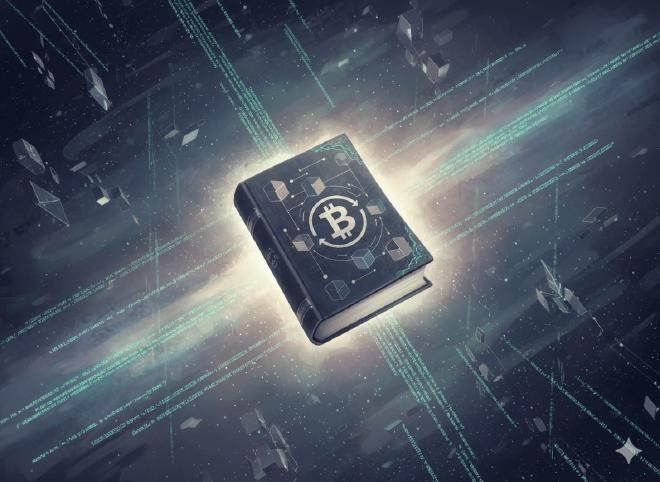- Yan Dong XYZ/
- Posts/
- Blockchain Revelation: Review of Satoshi Nakamoto's Collection - Blockchain is God's Ledger/
Blockchain Revelation: Review of Satoshi Nakamoto's Collection - Blockchain is God's Ledger

Table of Contents
Preface #
This review was actually written in February 2022, during the previous peak of Web3 narratives, when I was once again eager to participate in this wave. Unfortunately, the Chinese mainland A-share market had just entered a bear market, and the Hong Kong market was about to experience a historically undervalued period. Most of my assets were invested in these two markets, leaving me with no extra ammunition to open a new front.
Fast forward to 2025, in July the US passed the “GENIUS Act”, and in October the Trump family engaged in aggressive tactics through TACO transactions in the crypto market. Blockchain and Crypto have grown from infants in swaddling clothes into giants that influence the world.
Today, I received my first income from an Alpha airdrop activity. Although the amount is small, it might become the opportunity for me to knock on the door of the crypto world once again, so I dug out this review…
Original Article #
My first encounter with blockchain was in 2017. At that time, Bitcoin was booming, skyrocketing from $900 at the beginning of the year to nearly $20,000 by year-end. In company cafeterias, shuttle buses, and even in toilet stalls, I could hear people talking about it. Blockchain, Bitcoin, ETH, ICO - when these terms frequently reached my ears, it was hard not to become curious and want to participate.
At that time, I didn’t understand blockchain, but in that atmosphere, I couldn’t resist the urge to try. I invested a small amount of money in virtual currency trading, and even tried calling exchange APIs to create a grid strategy script running on my VPS. This experience quickly ended with regulatory bans on virtual currencies and several crypto market crashes. The term “crypto circle” became associated with “speculators” and “scammers” in my mind.
Time came to 2022, and the experiences of the past year reminded me of the 2017 boom. Everywhere I heard people discussing blockchain, but the buzzwords had changed to: Web3.0, NFT, DAO, DeFi. To understand these terms, I first needed to understand blockchain by looking back at its origins.
This book collects and organizes the speeches of Bitcoin inventor Satoshi Nakamoto in online forums and mailing groups, spanning from the birth of blockchain and Bitcoin in 2008 to the end of 2010 when Bitcoin began to enter the public consciousness and Satoshi disappeared.
The main content of the book consists of Satoshi explaining Bitcoin’s technical principles and discussing implementation details with cryptography experts and tech enthusiasts. It contains extensive engineering details about cryptography, distributed systems, and P2P networks. After reading it, it’s hard not to be impressed by Satoshi’s genius-level design and engineering capabilities. However, this part is quite difficult to read for those without a computer science background.
Beyond this, through the form of dialogues and email exchanges, one can somewhat sense Satoshi’s thoughts on the economic systems, operational logic, and philosophy of the real world.
From the emails and forum posts, it’s clear that Satoshi is not the stereotypical tech nerd of popular imagination. He has a deep understanding of how the real world operates, accompanied by profound “dissatisfaction” and “distrust”. I speculate that Satoshi’s dissatisfaction stems from: the real world operates based on “centralization”, where we have to entrust our privacy and certain rights to centralized institutions (banks, large corporations, governments). This makes centralized institutions the butcher’s knife while we become the fish on the chopping block (from arbitrary account suspensions to currency over-issuance and credit bubbles). Blockchain makes decentralization possible, showing that the world can operate under different rules…
Satoshi didn’t invent blockchain from scratch, but rather ingeniously integrated existing technologies and achievements in cryptography, game theory, and computer networks to create a self-sufficient, self-driven system that has been running for over a decade. I’m confident that with the development and breakthroughs in underlying technologies, blockchain’s performance and capabilities will continue to improve.
He wasn’t just a theoretical armchair philosopher either. He spent 18 months completing Bitcoin’s design work, and after publishing the whitepaper, he answered all questions and challenges from cryptography experts and tech enthusiasts - almost all issues had been considered in his previous thinking and planning. He had even written the code before publishing the whitepaper. What can I say? One can only admire genius. Even today, common misunderstandings about Bitcoin and blockchain among laypeople can find answers in these exchanges.
In the first sentence of the Bitcoin paper announcement, Satoshi wrote: “I’ve been working on a new electronic cash system that’s fully peer-to-peer, with no trusted third party.” Reading this now, it sounds like a divine proclamation of creation.
Satoshi himself didn’t anticipate that Bitcoin and blockchain would so quickly jump out of technical circles, burst into public consciousness, and deeply influence the world. However, Pandora’s box has been opened - centralization vs. decentralization, liberalism vs. cypherpunk, Web2.0 vs. Web3.0… Many discussions and changes are still unfolding, and perhaps we are living through history.